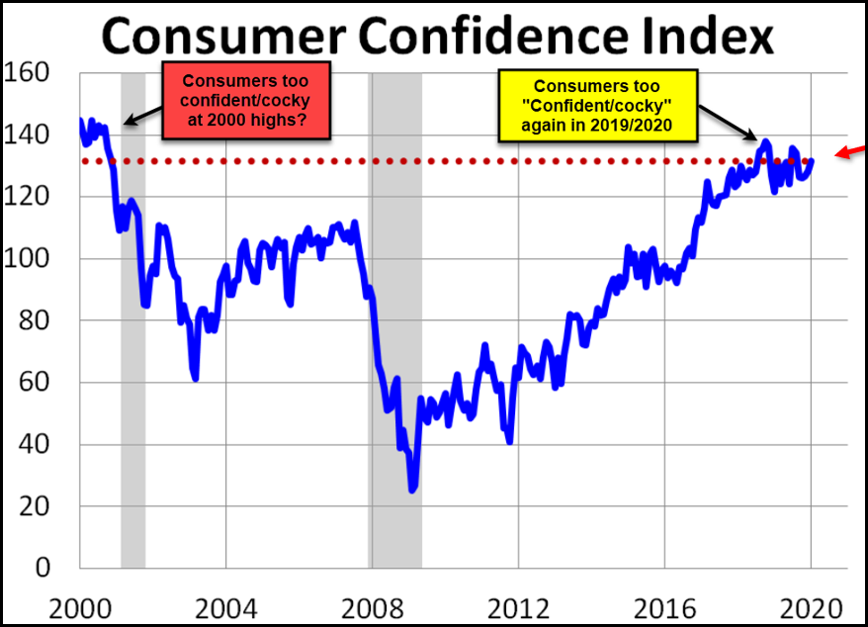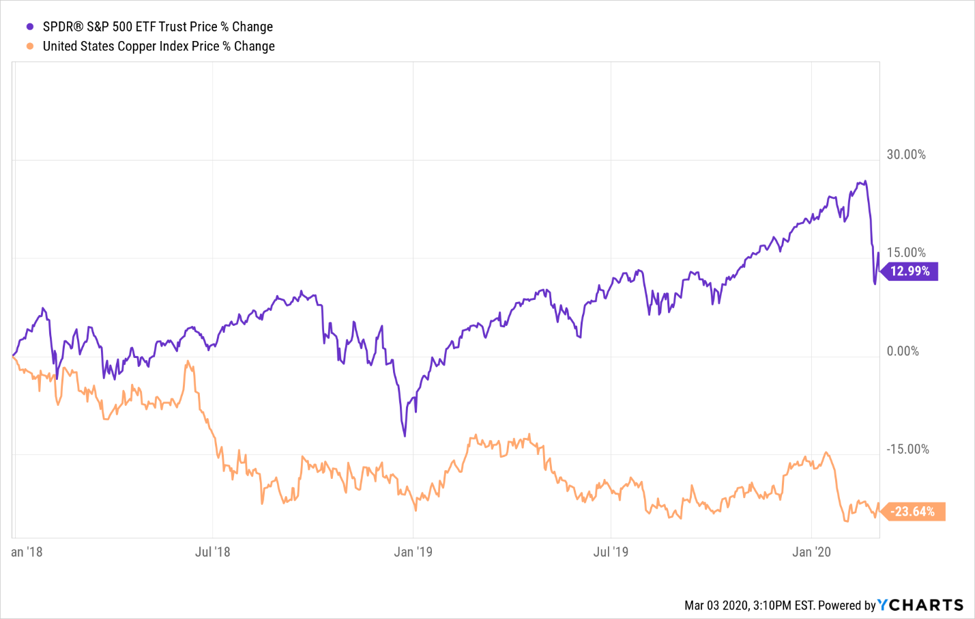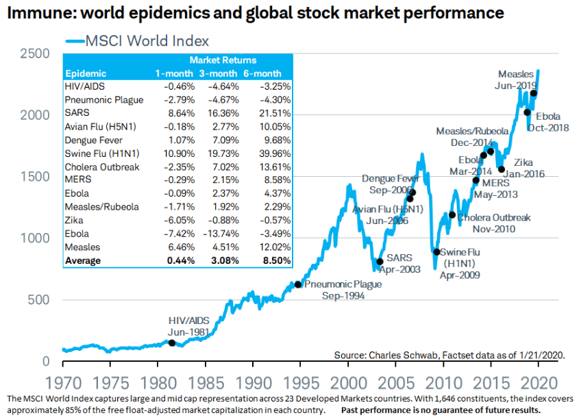2019 was historically one of the best years in the stock market…ever. And there was a significant amount of optimism going into 2020.
But, the corona virus – and the news coverage surrounding COVID-19 – started spreading…and fast. So fast, in fact, that it tipped the U.S. equities into correction territory (defined as a loss of -10% or more) in the matter of just a few days.
The timing of the virus is particularly problematic. We started the year with global economic growth on course for its weakest pace since 2009, but, we had confidence that the Federal Reserve and other global central banks would be able to stem this weakness through interest rate policy.
Let’s take a look at a couple of the indicators that are contributing to the overall stock market nervousness.
Complacency…ZZZZ…
We entered 2020 with widespread market complacency. The definition of “complacency” in stock market parlance is “excessive confidence” – the belief that the stock market can only go up. This complacency helped propel the stock market to consecutive new highs throughout 2019, lending more and more confidence to the thought that “nothing could go wrong.” When that’s the overarching tone of the market, then expect something to go wrong.
In spite of this complacency, we entered the year expecting the stock market performance to be “constructive” – not like 2019, but overall positive, particularly in light the Federal Reserve policy shift to lowering interest rates.
Take a look at the chart below – this shows the Consumer Confidence Index over the past 20 years. As you can see, Consumer Confidence is nearly back to the highs of 2000. (Chart Source: Kimble Charting Solutions) Historically, too much complacency has been a sign of an “overheated” stock market.

Less Building & Moving Stuff
Other indicators we were watching, and signs of a weakening global economy, was the price of key basic materials– copper and energy. Why pay attention to these two materials? Because copper is used to build stuff, and oil is used to transport stuff. So, if the price of these two assets is moving down, historically this has indicated a slowing economy.
Copper prices (depicted below by US Copper Index ETF [CPER]) had been moving the opposite direction of the stock market since at least January 2018. Energy prices (depicted below by US Oil ETF [USO]) had been attempting to rally over the past couple of years, but failing to break above specific price levels. And as you can see, oil prices turned sharply lower in January 2020, hitting the lows of December 2018, when the stock market took a -20% tumble.
S&P 500 Index versus Copper ETF (1/1/2018 – 3/3/2020)

S&P 500 Index versus US Oil ETF (1/1/2018 – 3/3/2020)

Where do we go from here?
You can’t plan a stock market strategy around a potential natural disaster. There is just a lot of uncertainty – and markets don’t like uncertainty:
- The coronavirus stands to impact global economic growth – especially if it becomes pandemic. Reductions in travel, business closures and disruptions in supply chains have slowed economic activity, especially in China and its trading partners.
- The market’s performance during the onset of other infectious diseases (e.g., severe acute respiratory syndrome (SARS), Ebola, avian flu, etc.) had a temporary and minimal impact on equity markets (see chart below.) But the timing of the COVID-19 is a concern, and different to the other virus shocks, most of which occurred when the global economy was less fragile.

- The Federal Reserved implemented an emergency interest rate cut of -0.50% on March 3 in an attempt to stem the economic impact from the coronavirus. This was first time the Fed had lowered rates between official Federal Reserve meetings since the 2008 Financial Crisis. Unfortunately, this move smacked of panic, and may do little to instill confidence in the economy – or the stock market.
- The looming presidential election is also creating uncertainty. Joe Biden appears to be pulling ahead of Sanders based on Super Tuesday’s results – Biden is considered more “stock market friendly” than Sanders. However, we still have a long way to go before there is clarity about the front runner. (Note: Since 1928, the stock market has ended the year down only 4 of the 23 election years, with most of the gains occurring during the second half of the year, once there was some clarity regarding the winner. We will blog on what’s called “the presidential election cycle” later in the year.)
Know Your Risk Tolerance!
The market will stabilize – but we just don’t know when, and the extent of the losses.
But we do know that it’s important to manage risk – manage losses – particularly if you are saving for specific goals, such as retirement. If you aren’t sure if your account is invested in a way that enables you “keep calm and carry on,” please contact us. We are happy to do a complimentary review of how much risk you are taking with your investments.

